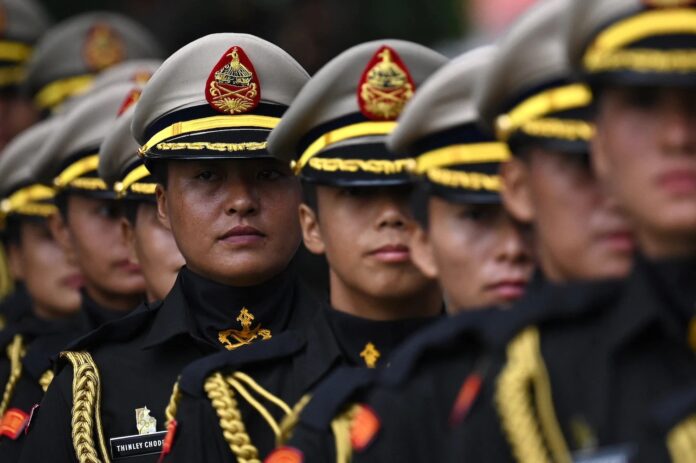As tensions between China and India have grown in the last few years, the countries wedged between them are becoming more strategically significant. The two competing powers have sought a buffer between them ever since their founding—1949 in the case of the People’s Republic of China, and 1947 for India. Many scholars argue that it is this desire for a safety cushion that led to China’s 1950 invasion of Tibet. Today, Chinese Communist Party (CCP) efforts to manipulate democracy in Nepal have succeeded in shaping a government in Kathmandu that is more receptive to Beijing than to New Delhi. The CCP has also extended its reach to monitor and suppress the Tibetan community there.
In recent months, China has also turned its attention eastward to its long-standing border dispute with the Kingdom of Bhutan. After years of so-called salami slicing along their shared border, as documented in Foreign Policy, China is attempting to engage in negotiations with Bhutan to formalize its ill-gotten gains—a strategy reminiscent of China’s playbook along its border with India and in the South China Sea. What is different is the strategic importance of Bhutan’s disputed regions to the China-India relationship.
Chinese control of the disputed Doklam plateau would allow Beijing unhindered mobilization and more access routes in the event of military conflict with New Delhi. As a result, any China-Bhutan talks are not just a bilateral issue, but rather part of a Chinese strategy to gain a crucial advantage over India. A resolution between the CCP and the government of Bhutan would reverberate throughout India, threatening peace in the region and escalating the crisis along the Sino-Indian border. The issue requires close attention from New Delhi as well as the Quadrilateral Security Dialogue—the Indo-Pacific partnership that includes Australia, India, Japan, and the United States.
Although it has no diplomatic presence in Bhutan, China has gone to great lengths to ensure lines of communication remain open between the two countries. This year, discussions about the border have increased in frequency after a nearly two-year lull, reflecting greater urgency on Beijing’s part. The latest meeting took place in May in Thimphu, Bhutan, just months after Chinese and Bhutanese representatives gathered in Kunming, China. The group agreed to “push forward” a three-step road map signed in October 2021, with the overarching aim of facilitating another round of formal boundary talks, which were postponed following the 2017 standoff between China and India in Doklam and the COVID-19 pandemic.
That Chinese diplomats have returned to the negotiating table with their Bhutanese counterparts has likely fueled unease in India and among the other Quad countries. After his state visit to Brussels in March, an interview with Bhutanese Prime Minister Lotay Tshering by the Belgian newspaper La Libre highlighted his country’s readiness to resolve the ongoing issue on its border with China. Unsurprisingly, Chinese state media latched on to the article to put further pressure on India; the Global Times singled out New Delhi as the “main obstacle” standing in the way of settling the dispute.
However, resolving the issue of China and Bhutan’s border is not a simple task. China now lays claim to locations in three separate geographic locations, including Doklam in the west, the sacred Buddhist area of the Beyul Khenpajong in the north, and the Sakteng wildlife sanctuary in the east. (The wildlife sanctuary, which doesn’t sit on the border, only appeared in Chinese demands in 2020.) These claims reflect Beijing’s bad-faith negotiating, which has marred talks between the two countries since they began in 1984. It’s clear why neither side has made progress through negotiations, despite meeting frequently over the years.
Since 1996, China has offered an exchange of territory with Bhutan, seeking to relinquish its claim to disputed regions in the north in exchange for Bhutan ceding more strategically important territory in the west. For Beijing, Doklam remains the goal: It sits at a junction that connects Tibet, Bhutan, and India, and it would provide the Chinese People’s Liberation Army with a tactical advantage. To make this a more attractive proposition, China noted that the territory in the north was far larger than the territory it sought. Although the initial offer nearly worked, the 1996 talks ultimately broke down.









































